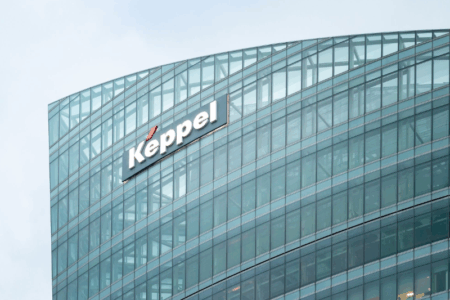Two challenging years of high interest rates and rising financing costs have significantly dampened unit prices of real estate investment trusts.
But not anymore.
2025 has seen Singapore REITs staging a remarkable comeback as rate cuts sink in.
REITs with stronger fundamentals and cost management are likely to lead the pack in the path to recovery.
Distribution hikes from several high-quality names signalled the worst may be behind the sector, offering investors early benefits from these easing rate expectations.
We look at some of these names and unpack what’s driving their resurgence.
Frasers Centrepoint Trust, or FCT (SGX: J69U) — Retail Resilience Paying Off
A pure play on the local suburban retail scene, Frasers Centrepoint Trust (FCT) focuses on malls providing essential products and services, deriving 54% of its gross rental income from these tenants.
FCT reported steady results for its fiscal year ended 30 September 2025 (FY2025), increasing its distribution per unit (DPU) by 0.6% year on year to S$0.12113.
This increase was driven by its higher gross rental driven by the acquisition of Northpoint City South Wing (NCSY).
The REIT’s committed occupancy remains high at 98.1% with a robust rental reversion of 7.8% despite the exit of Cathay Cineplexes at Causeway Point and Century Square.
FCT’s debt profile remains stable.
Aggregate leverage stood at 39.6% as of 30 September 2025, a slight increase from 38.5% a year ago, while the cost of debt came in at 3.8%.
FCT is further strengthening its portfolio, acquiring the higher-performing suburban retail asset of NCSY while shedding its non-core assets.
Additionally, its Asset Enhancement Initiative (AEI) at Hougang Mall achieved over 80% leasing pre-commitment even before planned completion by September 2026.
Overall, it demonstrated resilience in suburban businesses, delivering positive rental reversions with near-full occupancy, all while keeping debt and costs under control to continue raising DPU for the benefit of investors.
AIMS APAC REIT, or AA (SGX: O5RU) — Industrial Strength in a Softer Economy
AA REIT’s portfolio consists of a mix of logistics and industrial properties.
The REIT reported a modest increase in DPU to S$0.0472 for the first half of the fiscal year ending 31 March 2026 (1HFY2026), an improvement of 1.1% year-on-year (YoY) from 1HFY2025.
AA REIT’s properties remain in high demand, with an occupancy of 93.3% and rental reversion of 7.7%.
While aggregate leverage rose to 35.0% as of 30 September 2025, up from 33.4% a year ago, its blended debt funding cost declined to 4.2% from 4.4%.
While the acquisition of the Framework Building deepens its exposure to high-spec industrial assets, AEIs at 15 Tai Seng Drive and 7 Clementi Loop boost its portfolio Weighted Average Lease Expiry (WALE) with the signing of leases up to 15 years.
The REIT’s portfolio weighted average lease expiry (WALE) stood at 4.2 years, with a significant portion, amounting to 44.6%, expiring in FY2030 and beyond.
AA REIT’s rising DPU is supported by its disciplined capital management.
Together with its ongoing enhancements on existing assets, strategic acquisitions of new ones and long-term leasing momentum, it’s poised to benefit from the recovering economy, delivering income growth for investors.
Keppel DC REIT (SGX: AJBU) — Data Centres Powering Dividend Growth
For the first nine months of 2025 (9M2025), Keppel DC’s DPU grew 8.8% YoY to S$0.0767, up from S$0.0705.
Contributions from recent acquisitions, particularly Keppel DC Singapore 7 and 8, boosted its distributions.
Portfolio occupancy is stable at 95.8%, with 10% rental reversion and a healthy WALE of 6.7 years.
The REIT’s financial performance was strong, with gross revenue and net property income (NPI) surging 37.7% and 42.2% YoY, respectively for 9M2025.
Aggregate leverage ratio is 29.8%, with 74% of its debt being fixed-rate, mitigating interest rate risk.
Growth catalysts from AI-driven demand and upcoming new acquisitions such as Tokyo Data Centre 3 offer potential future upsides.
Keppel DC’s rising DPU, backed by operational strength and structural tailwinds, makes it a dependable dividend stock in the digital space.
Mapletree Pan Asia Commercial Trust, or MPACT (SGX: N2IU) — Turning the Corner After Integration
MPACT reported a DPU of S$0.0201 for the second quarter of the fiscal year ending 31 March 2026 (2QFY2026), rising 1.5% YoY from S$0.0198 a year ago.
Strategic portfolio optimisation, anchored by the strengths of its Singapore assets and effective debt reduction, supported its rise in DPU.
Finance expenses fell 16.4% due to lower interest rates and proceeds from divestments diverted to debt repayments.
Debt profile is sound with an aggregate leverage ratio of 37.6% for the quarter, a reduction from 38.4% a year ago.
The REIT’s local assets appear to offer more potential for future growth while overseas assets remain subdued:
- For the quarter, Vivocity delivered a stellar 7.7% YoY NPI growth, with 100% committed occupancy and 14.1% rental reversion. The mall’s recently completed AEI of Basement 2 in August 2025 could unlock further upside.
- In contrast, in Greater China, occupancy rose to 86.3% from 85.9% in June 2025, but experienced a negative 21.6% rental reversion.
- Similarly, while the occupancy of Hong Kong’s Festival Walk rose to 98.4% from 97.9% in June 2025, rental reversions took a hit, recording a negative 10.1%.
- On the flip side, South Korea’s Pinnacle Gangnam looks promising with occupancy maintained at a high 99.9% compared to June 2025, with rental reversion rising 7.9%.
Looking forward, sustained rate cuts and improved policy clarity are expected to drive further recovery.
MPACT’s post-merger strategy of anchoring its core businesses in the stable Singapore market while diversifying regionally is beginning to yield results for unitholders.
What This Means for Investors
As interest rates fall, REITs, which are structurally leveraged, benefit from easing financial pressures.
Rising distributions reflect the confidence of REIT managers that the current tailwind is sustainable.
However, not all REITs will benefit equally.
Investors should prioritise quality REITs with visible income growth, manageable gearing, and defensive tenant bases supported by strong sponsors and quality assets.
Selectively owning resilient REITs could be rewarding in the coming quarters – not just in dividend income, but also in potential capital appreciation.
Conclusion – Get Smart: Lock In The Yield Before It’s Too Late
As the REIT sector quietly stages a comeback, these four REITs are leading the charge with growing distributions signalling a turning point in sentiment.
This may be a chance to lock in rising income before prices catch up.
You walk past million-dollar opportunities every single day. Your coffee shop. Your commute. Your grocery run. But these “boring” Singapore companies are quietly building fortunes while everyone chases crypto and overpriced tech stocks. Our latest report reveals 5 small-cap goldmines hiding in plain sight. Click here to download for free now before prices catch up.
Follow us on Facebook, Instagram and Telegram for the latest investing news and analyses!
Disclosure: Larry owns units of Frasers Centrepoint Trust





